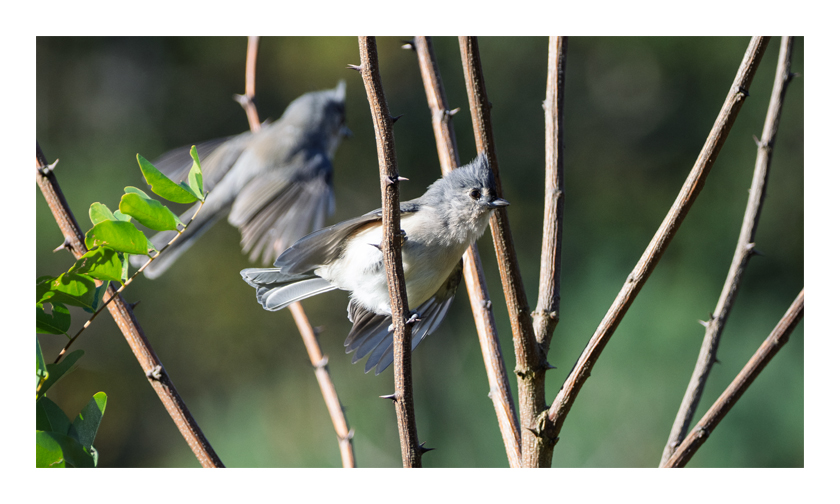
Tufted Titmice pairs usually remain in the same territory year round, and they are one of the birds I most frequently see and hear in my yard. At this time of year they are busy caching seeds to help them get through the winter.

Tufted Titmice pairs usually remain in the same territory year round, and they are one of the birds I most frequently see and hear in my yard. At this time of year they are busy caching seeds to help them get through the winter.

The pigeons in this photo are from the same flock that appear in my June image of the month. The day I took this photo, the pigeons were resting on the power line when this juvenile Cooper’s Hawk swooped in and flew around with them for a bit. In the end, the hawk decided to try and catch a shorebird rather than a pigeon.
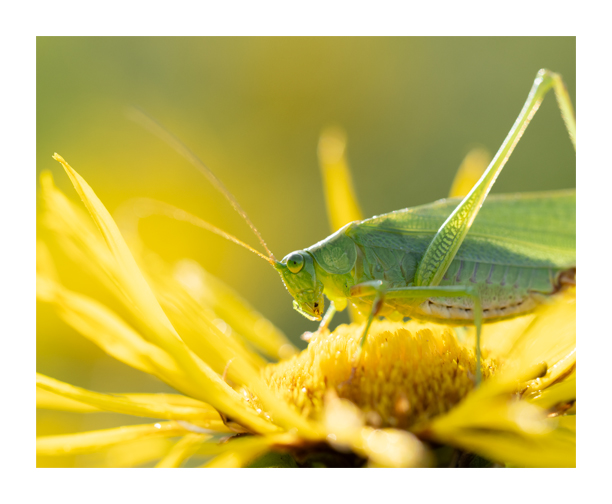
Here is a portrait of a katydid that I took at the very end of July. There are about 255 species of katydids in North America. I normally only see them in flight, when I accidentally flush them. I was thrilled to find this one posed nicely, backlit by the morning sun.
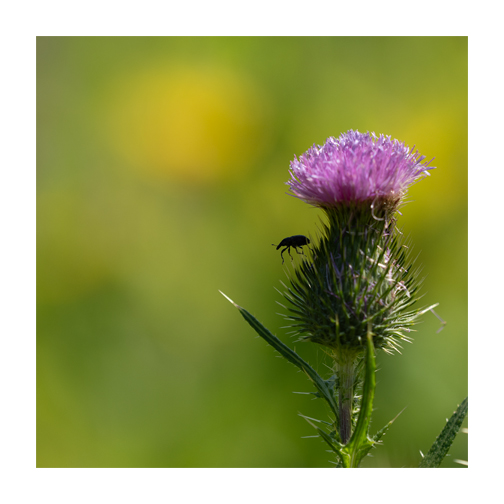
At first glance this weevil appears to be jumping away from the thistle, but it is actually standing on the pale tips of the flower’s spines.
There are over 60,000 species of weevil in the world. While I was not able to identify the one in the photo because it was in the shade, it is possible that it is Rhinocyllus conicus, a species introduced to North America from Europe in an effort to combat invasive milk thistle. The thistle in the photo is not milk thistle, and the observation of R. conicus attacking other thistles over the years means that their intentional release is now prohibited.
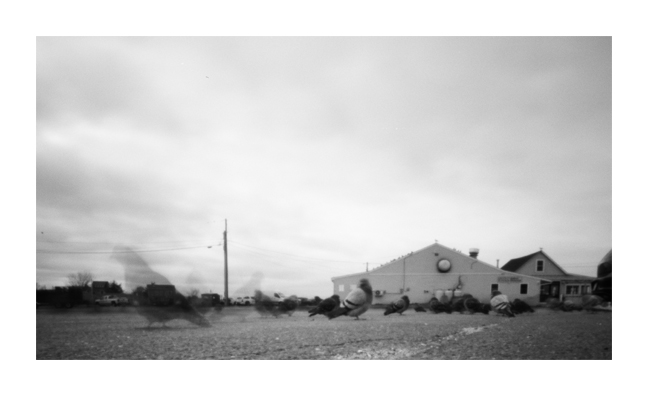
Here are some Rock Pigeons, captured on film with my pinhole camera. Pinhole cameras capture a wide view, providing a completely different feel than what I normally get with my telephoto lens. For this photo my camera was on the ground, so the pigeons appear almost as large as the building, which is quite far away from the pigeons.
It is important to note that these pigeons hang out in a parking lot where humans often feed them. This worked to my advantage for the photo – when I crouched down on the ground the pigeons came running over. I did not feed them. This photo is also evidence of how much human behavior can condition wildlife in ways that ultimately can kill the animals. I’ve seen humans feed these pigeons out of their car windows many times, and I’ve seen several dead pigeons in this parking lot – run over by cars because the pigeons approached in hopes of a meal.
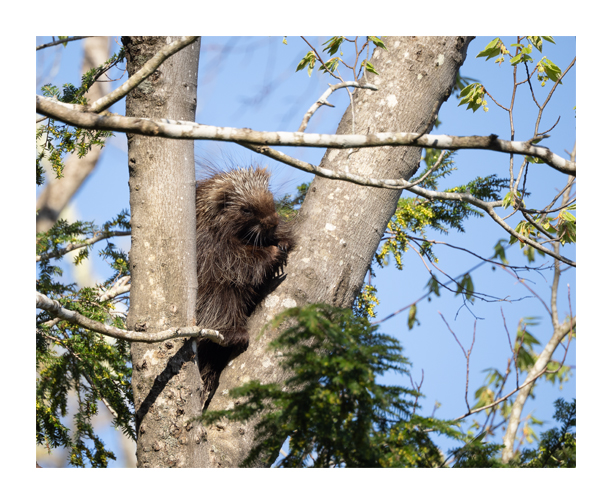
Early in May I encountered this North American porcupine in my woods. Porcupines are herbivores, and especially like the bark of hemlock, maple, and fruit trees. I always love seeing or hearing them around my house.
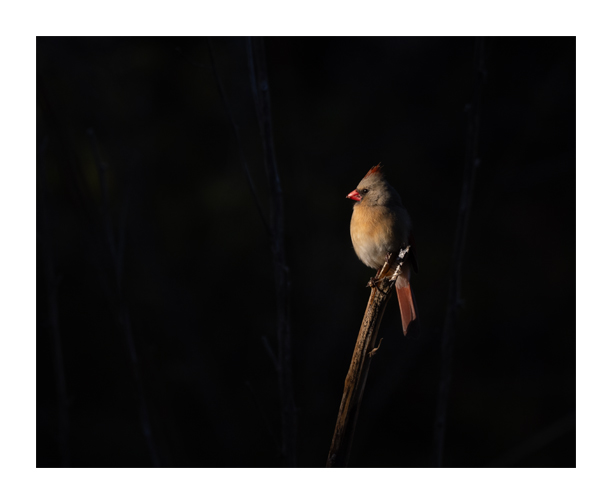
I photographed this female Northern Cardinal perched in a sunbeam earlier this month. Cardinals are year-round residents in Maine and they are one of the few species of birds where both males and females sing. Pairs share song phrases.
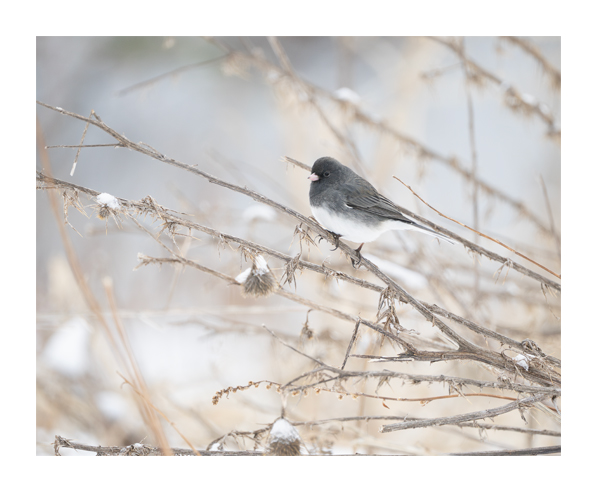
Although Dark-eyed Juncos are year round residents of Maine, I only see them in my yard outside of their breeding season. This one was part of a large flock, hunting for seeds in the snow.

Earlier this month, I watched a flock of Wild Turkeys forage for food near the woods where the snow was shallow. Here are two of them. Wild Turkeys occur in every U.S. state except Alaska.

I’ve been experimenting more with pinhole photography, so here’s an abstract landscape that’s totally different from my normal wildlife work.